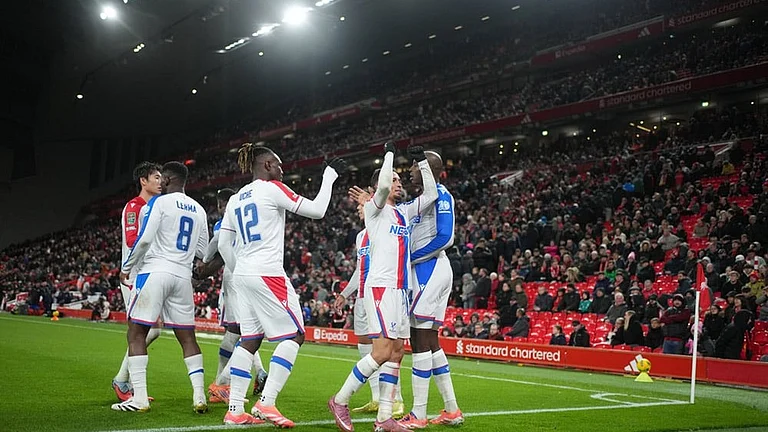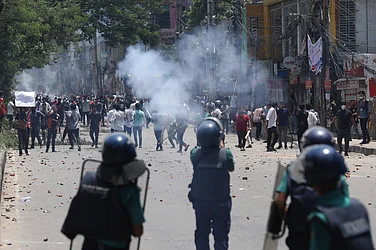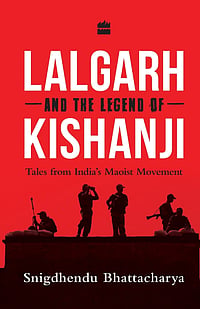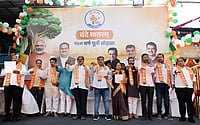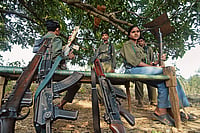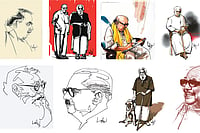How to deal with a socio-political force that thrives on majoritarianism, ironically getting its strength from an engineered perception of victimhood, and a leader who enjoys supreme authority and yet charms people as he plays the victim? How to defeat a ruler who also looks to claim the opposition space, asking the main opposition party to answer for their ‘past sins’? Are the opposition forces unknowingly helping the spread of the Hindu cultural nationalists with their incorrect responses?
These are among the questions that political scientist Ajay Gudavarthy’s latest book —Politics, Ethics and Emotions in ‘New India’— provokes. Gudavarthy, an associate professor at the Jawaharlal Nehru University and a columnist, in his 220-page book takes a deep dive into the socio-political changes and upheaval that India has stood witness to since Narendra Modi’s rise in the national political scene ahead of the 2014 Lok Sabha election.
Emotions and ethics have been two major driving forces of political campaigns and Gudavarthy sets his focus essentially on these two in the current Indian context to identify the sources of Hindu nationalist forces’ success so far. This is how he attempts to ‘find an entry point’ to fight an ecosystem that is built and thrives on a set of almost ironic contradictions, to outsmart a force that speaks with a hundred mouths and blurs the border between the fringe and the mainstream to keep people suspended in a state of perpetual confusion.
The book examines the contradictions in the approaches of both the Hindu nationalists, represented by the Rashtriya Swayamsevak Sangh (RSS)-Bharatiya Janata Party (BJP) family, and the so-called secular-progressive camp represented by various opposition parties and civil society groups. It asks if opposition forces have a proper understanding of India in the first place and even raises uncomfortable questions like “whether the current populist regime ‘constructs’ or ‘manufactures’ a consent or ‘represents’ a public morality that is organic”.
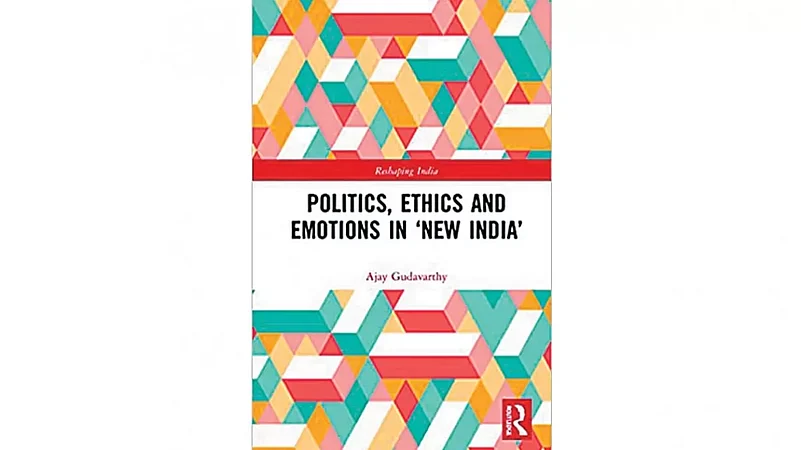
While asking if the current secular-progressive politics is sufficiently responding to India’s underlying reality, Gudavarthy draws attention to BR Ambedkar’s remarks that ‘constitutional morality is not a natural sentiment’ but one that ‘has to be cultivated’ and that ‘democracy in India is only a top-dressing on an Indian soil which is essentially undemocratic’.
“Would it be right to then argue that merely criticising and resisting the RSS-BJP combine alone would be misplaced, without doing something about the underlying social muck that is allowing for the majoritarian surge?” he asks.
He discusses Modi’s image-making process in detail and says it entailed ‘wanton destruction of everything that came in his way’ and that such destruction and centralisation of authority did not come without large-scale social consent. It would, however, be wrong to blame the consent on fear alone. Acts of honouring and celebrating those directly involved in violence, including their electoral victories with big margins and bagging of ministerial berths, “is a positive affirmation of the violence”.
“Consent and authoritarianism emerged as two sides of the same coin based on mobilising everyday emotions and ethics. It demonstrated how fragments of emotions and slices of ethics can be arranged and rearranged once you have won over the collective trust,” he writes.
He suggests that the consent to the Right has to be made sense of through a compassionate prism, taking into account the ‘facelessness of the neoliberal model’ that has made the ‘regressive-traditionalism of the Right more comforting than unfair’. While remaining alert to the ‘injustices and totalitarianism it will inevitably unleash’, it is also necessary to address ‘the legitimate anxieties that are pushing people towards the Right, without necessarily agreeing with how those anxieties are being articulated by the Right’.
While discussing the public psyche behind the trend of voting for regional welfare/service-oriented parties in assembly elections and for Modi in the parliamentary election, with special reference to Delhi, he writes that the electorate “do see that the BJP is playing foul, but they also see this as a necessary retributive measure to rein in unruly behaviour and to keep in check unwarranted assertion by the religious minorities. They agree without necessarily believing what BJP does”.
“Public ethics are fractured, diabolical, and flexible,” he opines, “They can move seamlessly between lofty idealism and rugged pragmatism; they can move between shared ethos and empowerment, and blind faith and submission; they can move between compassion and consent to violence.”
This is why the opposition needs to find answers to questions like how wide and deep is the circle of consent and what will arouse the collective conscience of the society.
“If we do not unpack the irony of how contradictory processes are being combined into a seamless process, mere moral critique of the process would be inadequate, if not irrelevant,” he argues, and adds that the secular-liberal critique, in fact, “further justifies the cultural nationalist project enabling it to take more majoritarian proportions.”
Does he mean that the opposition should not try criticising the blatant majoritarianism of the Hindu nationalists and focus on issues involving the economy and social justice? His answers are yes and no. According to him, the fight against Hindutva is complex because one has to look for “the correct kind of an entry point, which is not readily available but has to be created by political resistance that includes the majority that has conflicting interests”.
“One way to stall the spread of the Hindutva brand of politics is actually to take the question beyond Hindu-Muslim and the secular-communal rhetoric,” he suggests. He hopes that rebuilding a robust welfare state, with a focus on a free and compulsory common school kind of education system, and a wider engagement of the gender issues, could serve as the ‘entry points to bring back the social question in northern India, the traditional stronghold of Hindutva forces.
But this alone would not be enough. Instead of disallowing it the space it is demanding for itself, Hindu mobilisation can be neutralised by ‘providing for different social and political spaces for the Hindu identity,’ he suggests.
He identifies ‘unevenness of social locations’ as among factors that ‘produced confused subjectivity that often borders on self-hatred’. He cites as example ideas like the ‘poor Brahmin’, the ‘mobile OBC’, and the privileged women as ‘quotidian modes of unevenness’ that ‘end up creating a lack of clarity, complexity of purpose, and confused relation to others’. These are some of the social faultlines that the Right has exploited and their opponents need to give careful thought to address them convincingly.
The book, published as part of the Samruddha Bharat Foundation’s Routledge Reshaping India series, also has fodder for thought for the Hindu Right. It provokes questions like whether the saffron camp’s dependence on the image of one person, Modi, and the centering of power around two persons —Modi and his closest aide, Home Minister Amit Shah— is weakening one of the BJP’s core strengths, the party’s internal democracy, as opposed to the dynasty politics that the Congress and most opposition parties, barring the Left, have been associated with.
This inner democracy itself allowed the rise of Modi as the prime ministerial candidate despite Rajnath Singh being the party president in 2013 and Lal Krishna Advani still in the picture.
______________________________________________________________________________________________
(This appeared in print as "Unpacking the Contradictions".)








